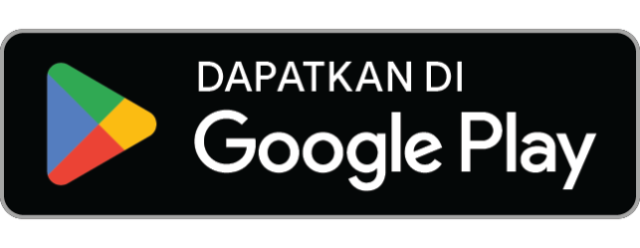LMS stands for learning management system. It is a platform for conducting online learning. LMS is not only used by educational institutions but also by corporate training. The teachers or trainers leverage LMS for deploying learning content and monitoring learners’ progress. Besides, the learners use LMS for enrollment and accessing learning content. Based on access discretion, LMS consists of open-source and closed-source LMS platforms.
Open-source LMS is an online learning platform that is free to access. Besides, it can be customized and modified easily. Open-source software gets a license from General Public License. It guarantees end users the freedom to run, customize, study, and share the software.
On the contrary, we cannot access and modify closed-source LMS freely. People or organizations usually own it. Therefore, it requires some amount of payment to use their service.
Benefits and risks of open-source LMS
Considering the explanation above, people tend to choose open-source LMS because of its flexibility. Besides, open-source LMS has some benefits. Here are the benefits of open-source LMS.
- It allows you to maintain your brand integrity
- It gives you total control of your content
- Cost-effectiveness since the base software is available freely
- There are full development capabilities inside
- It enables community access to provide valuable improvements
The explanation above implies that open-source LMS can adapt to the changing world of e-learning technology and provide complete control of your content. Today, you can find open-source LMS platforms easily. However, to choose the best one, you should consider several things, they are:
- Your niche: for education, training, onboarding, and many more
- User interface: should be simple and easy to access
- The audience size: make sure your LMS fulfills your demand for audience size
- Technical requirements: security, customer support, grading system, analytics, certification, and supported content types
Yet, there are no benefits without any risks. Here are some risks of using open-source LMS.
- Requires technical expertise to handle installation, deployment, administration, support, and more LMS activities
- There is no technical support included, so you have to do debugging and upgrade the software on your own or with an IT expert help
- The hidden cost of deployment, especially for set up and hosting fees, maintenance and support charges, customization fees, and also IT expertise salary if you cannot manage the technical support or maintenance on your own
Moodle Vs. Open edX Vs. Canvas
This article will discuss the best three open-source LMS for you in 2023. Here are descriptions, strengths, and weaknesses of each.

Moodle
We can use Moodle for both blended learning and fully online learning. Moodle enables you to control data privacy, security, and many more. Besides, you can customize themes and show your brand color or logo.
The key features of Moodle are custom reports and analysis, calendars, messaging, notifications for learners, badges, and certificates available. Besides, Moodle enables offline access with Moodle App. There are more than 100 translation languages available for this platform.
Strengths:
- It has a large total of add-ons and plug-ins
- Cross-browser compatibility
- Vast online community
- Completely free
- There are 45 days free trial period for the cloud solution
- Low server requirement
Weaknesses:
- Not suited for the large size of learners
- Lack of flexibility
- The admin interface is quite difficult to navigate

Open edX
Open edX is the most successful open-source LMS. It has deployed more than 50 thousand courses. Nine out of the top ten universities in the world used it. A lot of international companies use Open edX as well. For example, Microsoft, IBM, Google, Jonshon & Jonshon, and many more.
The key features of Open edX are cross-device compatibility, customizable, easy-to-use, interactive forums and discussion boards, support for live video conferencing, and real-time data analysis. Open edX supports 53 languages. You can also use interactive content like adaptive video streaming, AR, VR, animation, etc.
Strengths:
- Enable you to create both courses and degree programs
- Stable for both medium and large audiences
- Wide choice of learning content types
- Provides verified certificates on course completion
- user-friendly for both interface and creation
Weaknesses:
- Lacks course structure
- Limited third-party integration

Canvas
Canvas is an open-source LMS with the largest and most active community. It aims to make the teaching and learning process easy. It offers everything in a single place to access course materials, grades, communication tools, and insight right from Canvas.
Key features of Canvas consist of easy uploading and sharing of information, accept unlimited file size in videos and audio formats, personalized learning, and 99.9% system uptime.
Strengths:
- Easy for the third-party integration
- a large number of customization options
- alert or notifications about important events
Weaknesses:
- There are some useless tabs
- a little bit hard to get started
- there are several issues when navigating and editing
After comparing those three LMS, we can conclude that each has its strengths and weaknesses. However, you should know that today Open edX is the favorite LMS for many users because it has a lot of marketing tools. Besides, it is a user-friendly interface, easy to customize, and also free. It is suited for massive online courses and corporate training.
Due to the complexity of maintenance and support, people usually get their dilemmas about open-source LMS. However, today you can easily find an LMS provider that offers you an open-source LMS with technical support included. For example, Katalis.App. With Katalis.App, you can get all benefits of open-source LMS without any drama of maintenance complexity. You only need to focus on developing your business progress and hand over the LMS support or maintenance to Katalis.App.


0 Comments
Leave A Comment